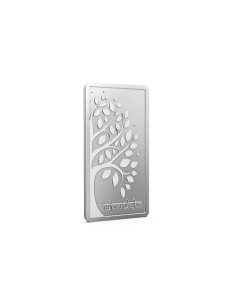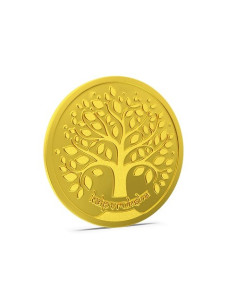Exclusive Deals & Trending Items


Divine Solitaires Diamond Engagement Ring for Women 18kt Gold Sol. Diamond 0.12 carats BIS Hallmark Certified
Shop NowRight now, a big change is happening in the world of money. Central banks are adding more gold to their gold reserves. The World Gold Council’s 2025 Central Bank Reserve Survey shows that 76% of central banks want to buy more gold in the next five years.
This change shows how important gold reserves are becoming. As you try to make sense of the financial world, knowing about global central bank gold reserves is key.
The World Gold Council’s survey gives us a peek into what central banks are thinking about gold. It shows that gold is becoming more important as a reserve asset.
Key Takeaways
- The World Gold Council’s 2025 survey highlights a record-breaking year for central banks’ gold reserves.
- 76% of central banks plan to increase their gold holdings.
- Gold reserves are becoming a crucial strategic asset.
- The trend is driven by the need for diversification and stability.
- Central banks are expected to continue bolstering their gold reserves.
The Unprecedented Gold Rush of 2025
Central banks are buying a lot of gold in 2025. They are setting new records. This shows a big change in the world’s economy.


Breaking Previous Records
In May 2025, central banks bought 20 tonnes of gold. The National Bank of Kazakhstan led the way. This is part of a bigger trend where they keep buying more gold holdings.
Many countries like Turkey and Poland are also buying a lot of gold. This shows a strong interest in gold among central banks.
| Country | Gold Purchases (Tonnes) |
|---|---|
| Kazakhstan | 5 |
| Turkey | 3 |
| Poland | 2 |
Key Factors Behind the 2025 Surge
Several things are making central banks buy more gold reserves. They are worried about world tensions, the economy after the pandemic, and rising prices.
“The role of gold in central banks’ reserves is becoming increasingly important as a hedge against economic uncertainty.”
They want to make their finances stronger. This trend is likely to keep going.
The gold rush of 2025 will change the world’s economy a lot. Central banks will keep playing a big role in the financial world.
Central Banks Gold Reserves: A Historical Perspective
To understand the 2025 gold reserve figures, we must look at gold’s history in central banking. Central banks have been buying gold for decades. But, how fast they buy it has changed a lot over time.


Evolution of Gold’s Role in Central Banking
Gold’s role in central banking has changed a lot. At first, gold backed currencies. Now, it’s a reserve asset for stability and diversification. Central banks have been buying more gold, especially in the last three years.
They’ve bought over 1000t of gold each year. This is more than the 400t-500t they bought in the last decade. This shows gold’s growing importance in their reserves.
Gold is now key for diversification and as a hedge against uncertainty. It’s a crucial part of their reserve strategies.
Comparing 2025 to Previous Peak Years
Looking at 2025 compared to other peak years, we see big gold reserves. The table below shows the top years for gold accumulation since 2000.
| Year | Gold Purchases (tonnes) |
|---|---|
| 2013 | 841 |
| 2023 | 1041 |
| 2025 | 1134 |
2025 is a record year, with 1134 tonnes of gold bought. This beats the 2023 peak, showing gold’s growing role in central banks’ reserves.
“The increased demand for gold by central banks is a clear indication of its role as a safe-haven asset in times of economic uncertainty.”
Global Economic Catalysts Driving Gold Accumulation
In 2025, central banks have greatly increased their gold reserves. This is due to several global economic factors. The post-pandemic economy, inflation worries, changes in monetary policy, and geopolitical tensions are key drivers.
Post-Pandemic Economic Landscape
The world is still healing from the pandemic’s effects. This has made central banks more uncertain. They are turning to gold, a stable asset, to diversify their reserves.
A World Gold Council survey found that 95% of respondents expect official gold reserves to grow in the next year. This shows strong confidence in gold as a strategic asset.
After the pandemic, there’s been a move towards more protectionist policies and trade tensions. This has made central banks want to increase their gold reserves. It’s also led to more demand for gold from investors seeking safe assets.
Inflation Concerns and Monetary Policy Shifts
Inflation worries are pushing central banks towards gold. As inflation rises, the value of paper money can drop. Gold becomes a good hedge against this.
Changes in monetary policy, like keeping interest rates low, also favor gold. With low interest rates, gold becomes more appealing for diversifying reserves.
| Factor | Impact on Gold Reserves |
|---|---|
| Inflation Concerns | Increased demand for gold as a hedge |
| Monetary Policy Shifts | Lower opportunity cost of holding gold |
Geopolitical Tensions Accelerating Gold Purchases
Geopolitical tensions are also driving gold accumulation. Gold is seen as a safe asset during risky times. Central banks are boosting their gold reserves to protect against currency and economic risks.
“In times of economic uncertainty, gold has historically proven to be a reliable store of value, making it an attractive asset for central banks looking to diversify their reserves.”
Central banks are preparing for future uncertainties by increasing their gold reserves. This trend is likely to continue, fueled by ongoing global economic challenges.
Top 10 Nations Leading the Gold Reserve Race in 2025
In 2025, the world’s top economies are racing to increase their gold reserves. Central banks are turning to gold as a safe asset. This is changing the global economic scene.
Traditional Gold Powers
The United States, Germany, and Italy have always had a lot of gold. They still play a big role in the global gold market.
Maintenance vs. Growth Strategies
The United States keeps its gold reserves steady. Germany and Italy, however, are adding more gold. They trust gold as a valuable asset.
Public Sentiment Toward Gold Holdings
People in these countries think gold reserves are smart. For example, over 70% of Germans see gold as a solid investment.
| Country | Gold Reserves (Tonnes) | Change from 2024 |
|---|---|---|
| United States | 8,133.5 | +1.5% |
| Germany | 3,363.4 | +2.2% |
| Italy | 2,451.8 | +1.8% |
Emerging Market Leaders
China, Russia, and India are growing their gold reserves. They have strategic reasons for doing so.
Strategic Motivations for Accumulation
China is moving its reserves away from the US dollar to gold. This boosts its economic power. Russia and India are also buying gold to lessen their reliance on foreign currencies.
Impact on Regional Economic Influence
These emerging leaders are increasing their economic influence with gold. China’s growing reserves are making it stronger in Asia.
Surprising New Entrants to the Top Ranks
Countries like Kazakhstan and Turkey are quickly adding gold. They are doing this to diversify their economies.
India’s Strategic Position in the Global Gold Reserve Landscape
India’s growing gold reserves show its smart economic planning. It’s clear India is a key player in the global gold market. The Reserve Bank of India is boosting its gold, making India stronger in the global gold scene.
Reserve Bank of India’s Gold Acquisition Strategy
The RBI has a smart plan for buying gold. It focuses on both improving the domestic market and using new financial ideas.
Domestic Gold Market Integration
The RBI aims to link India’s gold market better with the world. It’s making gold trading smoother and transactions clearer.
Gold Monetization Schemes
The RBI’s gold schemes let people and groups deposit gold in banks. They earn interest, which helps use idle gold and cut down imports.
How India’s Reserves Compare to Other Asian Powers
India’s gold reserves are big and important in Asia. The table below shows how India stacks up against other Asian countries.
| Country | Gold Reserves (Tonnes) | % of Total Reserves |
|---|---|---|
| India | 800 | 7.5% |
| China | 2,168 | 3.2% |
| Japan | 765 | 2.5% |
China has the most gold reserves, but India is catching up. The RBI’s smart gold buying is making India a big player in the global gold market.
The Great Shift: From Dollar Dominance to Gold Security
A new era in global finance is here, with gold leading as a top reserve asset. You’re seeing a big change in how central banks handle their reserves. They’re moving from just using dollars to a mix that includes gold.
This change comes from several reasons. One is the trend of moving away from the dollar. Another is the need for a safe option against currency ups and downs. So, central banks are turning to gold to make their reserves safer and more stable.
De-dollarization Trends Accelerating in 2025
In 2025, the trend of moving away from the dollar is speeding up. A big majority think the dollar’s role in global reserves will shrink in five years. This is pushing central banks to spread out their reserves, with gold being a key choice.
- Increased geopolitical tensions are prompting a search for safe-haven assets.
- Concerns over inflation and monetary policy shifts are making gold an attractive option.
- The need for a hedge against currency volatility is driving gold demand.
Central banks are proactively adjusting their strategies to navigate this new landscape, with a focus on enhancing the security and stability of their reserves.
Gold as a Strategic Hedge Against Currency Volatility
Gold has always been seen as a reliable shield against currency ups and downs. When the economy is shaky, gold usually holds its value well. This makes it a great choice for central banks wanting to reduce risk.
The strategic inclusion of gold in reserve portfolios can enhance their overall stability and security. As currency markets keep changing, gold’s role as a hedge is growing more crucial.
By adding gold to their reserves, central banks can handle the global financial scene better. As we look ahead, gold’s role in central banks’ reserve plans worldwide is clear.
Technology Revolutionizing Gold Reserve Management
Technological advancements are changing how central banks manage gold reserves. You’re seeing a big move towards safer, more efficient, and clear processes.
The rise of blockchain technology and digital gold certificates is notable. These innovations bring many benefits, such as:
- Enhanced security through immutable records
- Improved transparency and auditability
- Streamlined processes for gold transactions
Blockchain and Digital Gold Certificates
Blockchain technology makes digital gold certificates possible. These certificates stand for physical gold. This change helps central banks manage their gold better. For example, the Bank of England is using blockchain for gold transactions.
Advanced Security Protocols for Physical Gold Storage
Along with digital advancements, new security measures protect physical gold. These include:
- State-of-the-art vaults with multi-layered security systems
- Regular audits and inspections to ensure compliance
- Advanced tracking and monitoring systems for gold storage
By using these technologies, central banks can keep their gold reserves safe. This strengthens the global financial system.
Sustainable and Ethical Gold Acquisition Practices
Central banks are focusing more on green and conflict-free gold. They are the biggest buyers of gold, so their choices matter a lot. As someone involved in the global economy, it’s good to know about these changes.
Environmental Standards in Central Bank Gold Sourcing
The environmental impact of gold mining is a big worry now. Central banks are setting high environmental standards for gold. They support mining methods that are kinder to the planet, like restoring mined land and managing water wisely.
This move towards green practices is good for the environment. It also makes gold a more reliable choice for reserves.
Conflict-Free Gold Initiatives by Major Central Banks
Big central banks are pushing for conflict-free gold. They want to make sure gold mining doesn’t fund wars or harm people’s rights. They work with gold suppliers to check if gold is mined ethically.
This effort protects their gold reserves and supports fair mining practices. Expect these efforts to shape the gold market for years.
The gold industry is changing fast, thanks to central banks’ focus on green and fair gold. This shift will likely change how gold is bought and sold worldwide.
Market Impact: How Central Banks’ Gold Stockpile Affects Global Prices
Central banks’ gold reserves hit a record high in 2025. This has sparked debate on their effect on gold prices worldwide. It’s key to grasp how central banks’ moves shape the gold market price you see.
Price Movements Correlated with Reserve Announcements
Central banks’ gold reserve changes cause market shifts. For example, in April 2025, gold prices soared to $3,500.05 per ounce. This was after major central banks made big reserve announcements.
These announcements often lead to price swings. Investors then adjust their plans. The link between reserve updates and gold prices shows the metal’s value and safety, especially when the economy is shaky.
Forecasts for Gold Markets Based on Central Bank Activity
Central banks’ gold market actions will likely keep affecting prices. Analysts foresee prices staying volatile, possibly rising, if banks keep buying gold. Geopolitical issues and economic signs will also influence the gold market.
Understanding central banks’ role in the gold market is crucial for investors. Their strategies and announcements can greatly affect your investment choices.
Financial Stability Implications of Record Gold Reserves
Central banks are buying more gold, which is changing how we think about money. They’re moving away from just using currency and towards gold and other solid assets.
Gold as a Stabilizing Force During Economic Uncertainty
Gold is seen as a safe place to put money when the economy is shaky. Now, 44% of central banks manage gold separately, up from 37% in 2024. This shows gold is becoming a key part of their plans to stay stable.
“In times of economic turmoil, gold remains a steadfast asset, providing a level of security that is hard to find in more volatile investments.”
By managing gold, central banks can handle economic ups and downs better. They use gold’s steady value to protect against risks.
Potential Risks of Concentrated Gold Holdings
Gold can be a steady hand, but having too much of it can be risky. Big gold deals can shake up the market and cause prices to swing wildly. Central banks need to mix gold with other assets to not rely too much on it.
| Central Bank | Gold Reserves (Tonnes) | % of Total Reserves |
|---|---|---|
| United States | 8,133.5 | 74.6% |
| Germany | 3,363.4 | 73.5% |
| Italy | 2,451.8 | 71.4% |
The table shows big central banks have a lot of gold. They hold it as a big part of their reserves. This means they have to be careful to avoid problems from gold price changes.
Investment Lessons from Central Banks’ Gold Strategy
Central banks are buying more gold, showing us how to invest wisely. Their smart moves with gold can help us diversify our portfolios.
Gold Investment Options for Indian Investors
Indian investors have many gold investment choices. You can buy physical gold like coins or bars. Or, you can choose newer investment options.
Physical Gold vs. Sovereign Gold Bonds
Physical gold is a classic choice, giving you a real asset to hold. Sovereign Gold Bonds (SGBs) are a modern option. They offer interest on your gold investment.
Gold ETFs and Digital Gold
Gold ETFs and digital gold are great for those who want a liquid investment. They let you invest in gold without needing to store it physically. Plus, they can be traded easily on stock exchanges.
Creating a Balanced Portfolio with Gold Exposure
A balanced portfolio is key to managing risk and boosting returns. Adding gold can protect against market ups and downs and inflation. As central banks keep buying more gold, it’s clear gold is a smart part of a diversified strategy.
Deciding how much gold to put in your portfolio depends on your financial goals and risk level. A common advice is to allocate 5-10% of your investments to gold. This varies based on your personal situation.
“Gold is a safe-haven asset that can provide stability in times of economic uncertainty.”
By learning from central banks and exploring gold investment options, you can make your portfolio stronger and more varied.
Beyond 2025: Future Projections for Central Bank Gold Trends
Looking ahead, the path of central banks’ gold reserves is set to change a lot. You might be curious about how this affects the global economy and your investments. The numbers show that 76% of respondents think gold will make up a bigger part of total reserves in the next five years.
This suggests a strong trend of central banks adding more gold to their reserves.
Short-term Outlook (2026-2027)
In the short term, central banks are expected to keep buying gold. The global central bank gold reserves are likely to grow steadily. This is because banks want to diversify and protect against economic risks.
Geopolitical tensions and the need for financial stability will drive this trend.
Long-term Forecast (2028-2030)
By 2028-2030, the central banks’ gold stockpile is expected to be even more important for global financial stability. As de-dollarization trends grow and inflation worries stay, central banks will likely add more gold to their reserves. Get ready for a shift in the global economic scene, with gold leading the way in reserve assets.
Conclusion: The Golden Age of Central Banking
The year 2025 is a big deal for central banks and gold reserves. Global reserves have hit new records. This shows a big move towards gold as a key asset, thanks to economic worries, inflation, and world tensions.
Central banks are buying more gold, with the US, China, and India leading the way. The Reserve Bank of India’s gold buying is especially notable. It’s helped India become a key player in the global gold market.
This trend means a lot for the economy. Gold is helping to keep things stable when times are tough. As central banks keep buying gold, it could push prices up. This trend is expected to keep going, shaping the financial world.
Thinking about investing? Remember how important gold is becoming for central banks. With more gold in reserves, it’s clear gold is a key part of our financial system.



















